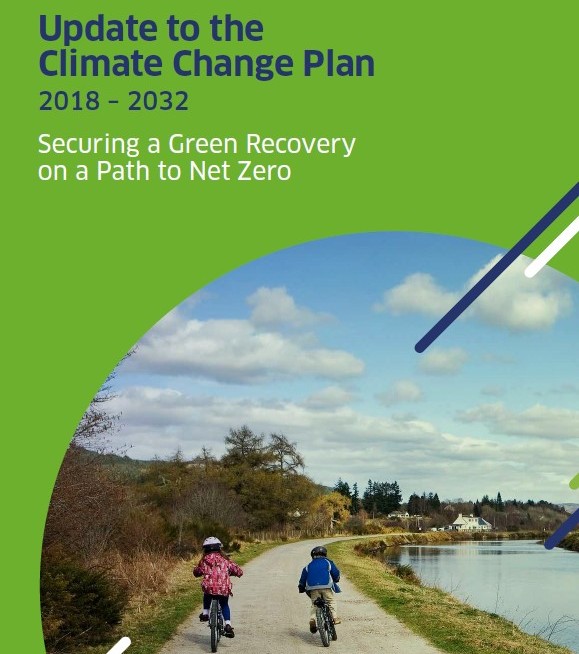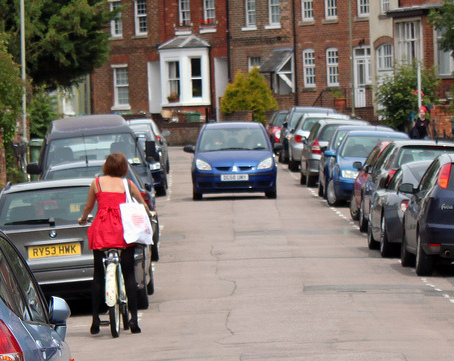Councils across Scotland, not least Edinburgh, face big challenges on active travel in 2021. But what they can achieve will depend significantly on decisions by the Scottish Government – specifically their actions on traffic reduction and on helping Councils make successful Spaces for People projects permanent.
World-beating traffic reduction??
In its Climate Change Plan Update [CCPu] the Scottish Government has, remarkably, announced a super-ambitious “commitment” to reduce car-km in Scotland by 20% by year 2030. Although many cities have significant traffic-reduction policies, we do not know of any other country in the entire world which has such bold ambition. It means a huge political challenge in sharply reversing the long-standing trend of facilitating more and cheaper private car transport through expanding road capacity and not charging for road use.
In a climate-crisis world, it is no exaggeration to say the government will need their feet held to the fire on this commitment. The record so far on meeting active travel targets has been disappointing, to say the least, with the almost complete failure of their 10-year target that 10% of all trips would be by bike in 2020. As we point out in our CCPu response, policies and funding completely failed to follow the ambition, despite many evidence-based reminders.
CCPu promises a 2021 government “routemap” on how to achieve the 20% reduction. This will have to be evidence-based, 100% robust and with major early actions, if it is to convince.
Transport policy changes often take time to achieve full effect, as individuals and businesses gradually adapt their patterns of travel, lifestyle and location to new transport opportunities or costs. Thus major early action is vital.
In evidence to the Scottish Parliament’s REC Committee, Chris Stark, CEO of the UK Climate Change Committee, stated that the reduction “will not happen unless there is a combination of carrots and sticks, and the kind of policies (in CCPu) are mainly carrots.“
Policies at national level, some of which need cooperation with the UK government, must include road-user charging (urgent, given declining petrol duty revenue), a halt to road capacity increases, and additional demand-management measures such as expanding the delayed Workplace Parking Levies to include providers of large customer-parking areas such as out-of-town shopping centres.
Government must also work with and incentivise councils to adopt and implement local policies which ensure the overall 20% national reduction. City Councils such as Edinburgh and Glasgow may need to commit to greater reductions, as it will be even more challenging for rural councils.
Edinburgh made a great start in 2019 with the City Centre Transformation (CCT) strategy. However the details are still too vague, we need to start seeing action on the ground, wider measures beyond the city centre, and pro-active government support to ensure that the Council can fully contribute to the national 20% reduction commitment.
Finally, not only will traffic reduction contribute to climate policy, but there is growing evidence that it will cut road casualties.
Making Spaces for People permanent
The Scottish Government has invested £39m in Spaces for People projects, of which Edinburgh received £5.25m, resulting in schemes at over 50 schools (many including road closures), 39km of segregated cycle lanes, and many footway widenings in Edinburgh’s local ‘town centres.’
This astonishingly rapid implementation was legalised by the government amending Temporary Traffic Regulation Order (TTRO) rules in response to the covid crisis, to facilitate safer walking and cycling – thus reducing pressure on public transport and enabling fresh-air exercise and social distancing.
However, from the outset the Transport Minister was clear that local authorities might later make SfP schemes permanent, to help meet other goals such as climate and public health. Many councils, not least Edinburgh, agreed. This would tie in well with pre-pandemic local surveys such as Edinburgh Bike Life which found 74% supporting new cycle tracks even where this meant less space for other traffic.
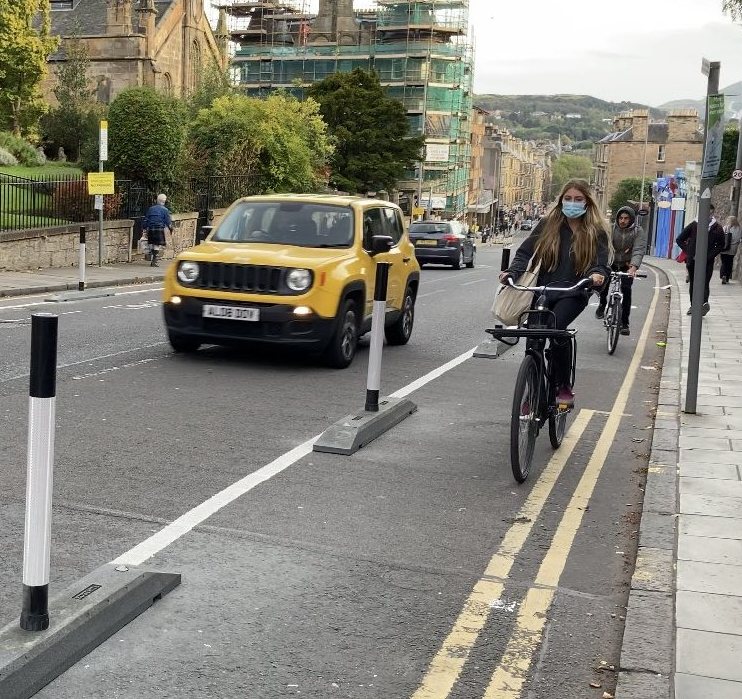
SfP – Morningside Road 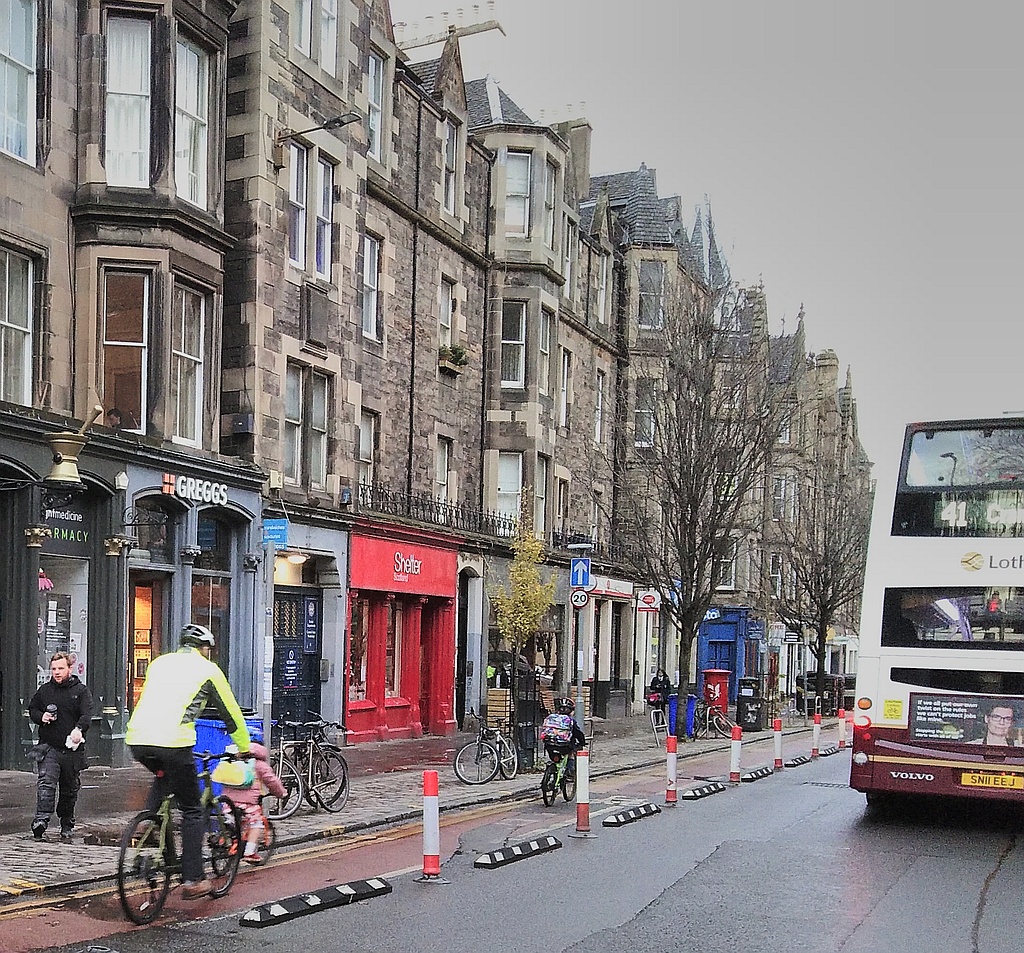
SfP – Forrest Road 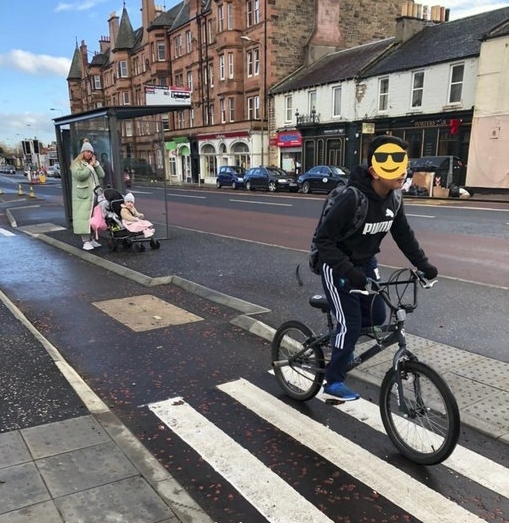
Permanent – Piershill
However, making SfP schemes permanent is not just a stroke of the pen. There are significant difficulties for Councils, including…
- Legal – clearly, for a permanent scheme, full consultation and the opportunity for objections is essential. However the necessary Traffic Regulation Order (TRO) process, especially if there are objections, may take 1-2 years and continue well past the expiry of the TTRO, meaning removal of the scheme in the interim. There is a get-round by using an Experimental TRO (ETRO) followed by a full TRO, but this too has its problems, and the bureaucracy of TTRO then ETRO then TRO is ridiculous.
- Financial – permanent schemes are likely to be very different from the SfP temporary measures, and will cost significantly more in terms of design, materials and installation, though they will serve largely the same functions. For example, compare the permanent segregated lane at the east end of York Place with the temporary bollard-based SfP lanes.
- Staffing – permanent schemes require significantly greater staff input than the SfP temporary provision, at all stages – traffic orders, public consultations, detailed design, implementation.
At the start of the pandemic the Scottish Government rapidly changed the TTRO rules, and supplied cash, to allow SfP schemes to happen. It must now act equally determinedly to assist councils in making successful schemes permanent. Or, it can let the opportunity slip … and in effect throw away the £39m.
Because of the timescale aspects above, Edinburgh Council is already looking to embark on the ETRO process [paras 4.30-4.33] but it faces all the difficulties we describe.
Spokes has raised these issues at the Scottish Parliament Cross-Party Group on Cycling, Walking and Buses, who are as a result in correspondence with the Cabinet Secretary for Transport, Infrastructure and Connectivity, Michael Matheson MSP. The type of legal, financial and other measures which he should consider include…
- Allow temporary infrastructure to remain in place beyond TTRO expiry until such time as a full TRO, public consultation and detailed design are complete and funding is in place for the permanent scheme
- Rationalise ETRO/TRO rules, as in England, to reduce bureaucratic duplication, whilst still ensuring full consultation
- Significantly increase active travel infrastructure funding so that schemes can be made permanent without delays of years. Already many bids by Councils cannot be met, yet Scotland’s Programme for Government freezes active travel cash at its present £100m a year for the next 5 years.
Edinburgh Council challenges
Not in any particular order, here are some of the main areas where we hope to see significant progress in Edinburgh in 2021…
- Making successful SfP schemes permanent – see above. Doing all it can within current legal and financial constraints, and pressing the Scottish Government for a more helpful context and support
- Overall analysis of SfP and other existing and planned cycle schemes – to identify missing links and priorities in developing a network linking residential areas and main destination areas
- Start work on major planned permanent schemes including…
- CCWEL, City Centre west-east route [now due to start mid 2021]
- MGS, Meadows to George Street [work not due till 2022]
- Meadows to Canal [postponed due to staff moved to SfP]
- Roseburn to Canal [preliminary works starting now?]
- Mayfield/ Cameron Toll to BioQuarter [work due to start mid 2021]
- City Centre Transformation – Progress on the strategy and the actions. With many staff transferred to (important) SfP work, has CCT taken a back seat?
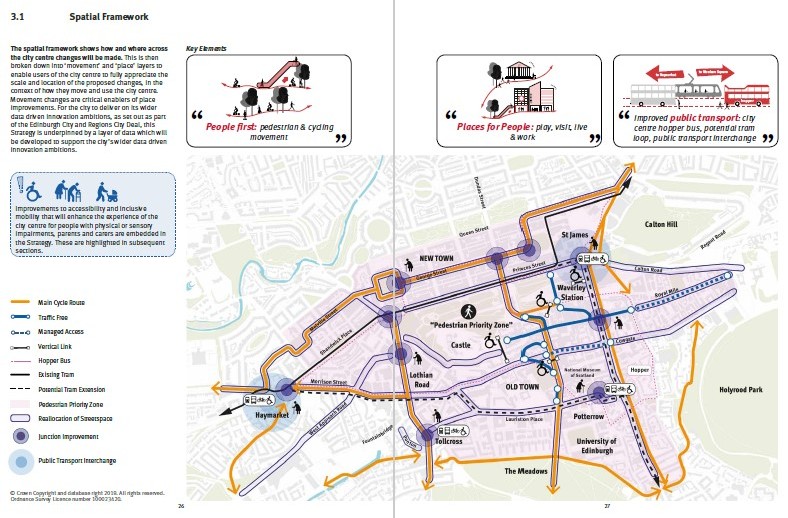
brown = “main cycleroute” 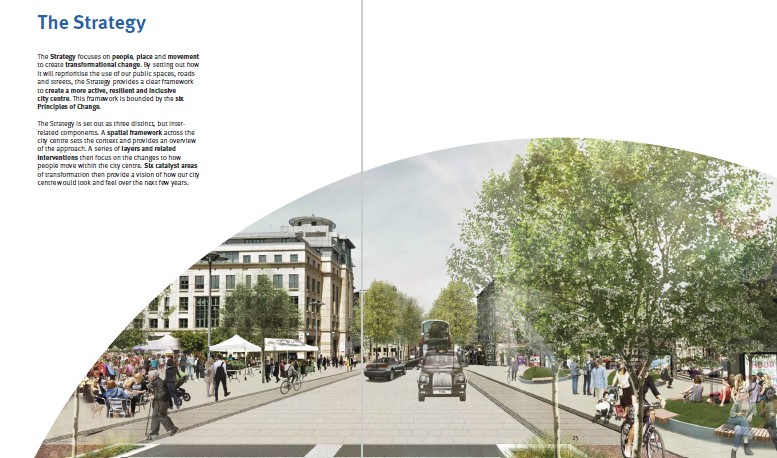
Lothian Road
- Tramline blackspot safety measures – Traffic Orders for physical remedial measures at several recognised blackspots were approved well over a year ago. Injury crashes continue, and it is distressing that (apart from advance traffic signals) the measures are still unimplemented
- Action at Sir Harry Lauder/ Portobello High Street junction – two cyclist deaths in under 2 years; short-term and long-term measures promised but we are very concerned about insufficient ambition and the timescales for these vital improvements
- Major junctions safety review – following the above deaths, the Council has started a review of vulnerable road user safety at all major junctions – this needs to be bold, with early measures as well as longer term major redesigns
- Tramline extension cycleroutes – After a big campaign the Leith Walk plans, now with unidirectional segregated lanes, are a huge improvement on the original, but plans from Foot of Walk to Newhaven are less clear and are very late given that tramlines are now being laid
- Rethink project processes – significant Edinburgh cycle projects traditionally take 5-10 years from initial decision to implementation, whereas 39km of ‘temporary’ SfP segregated cycleroutes appeared in less than one year. For the future, new thinking is needed which combines the best of both approaches, to ensure both relatively speedy implementation and also full and improved consultation and communication with everyone affected, residents, businesses, disabled people, schools, and so on.
What you can do
- For the top two sections of this article (traffic reduction, and helping councils to make SfP schemes permanent) contact your MSPs. Explain why this concerns you, then ask them to raise the subject with the Minister, and send you the response. Find your MSPs here–>https://beta.parliament.scot/msps/current-and-previous-msps
- For Edinburgh developments contact your councillors. Start with something positive if possible. Then explain what concerns you, and ask them to look into it and get back to you. Find your councillors here–>https://democracy.edinburgh.gov.uk/mgMemberIndex.aspx. If you don’t know your ward, use the postcode search first
- Retweet our tweet about this article.

